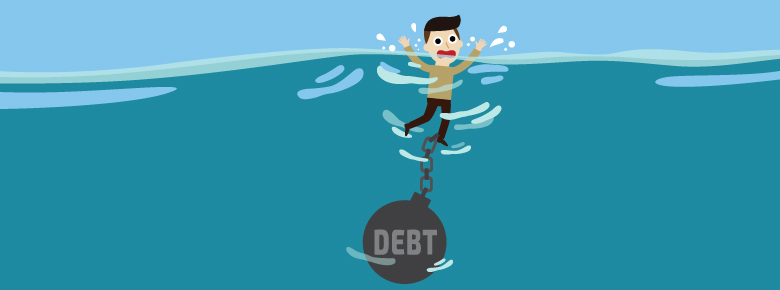
All debt is not created equal. Two people with $10,000 in debt might seem to be in similar financial situations at first glance. But a closer look reveals one of these people has student loans while the other has an auto loan. Someone with $30,000 in debt could have a mortgage — or they could have major credit card debt.
As you can see, debt is all about context. The type of debt you’re carrying affects how you’ll go about addressing it, and what consequences you’ll face if you come up short.
You may have heard the term “unsecured debt” floating around and wondered if it applied to you. Here’s more on what it is and what happens if you can’t pay this particular category of debt.
Unsecured Debt vs. Secured Debt
The distinction between secured and unsecured refers to whether or not there’s any collateral on the debt. Secured debts are linked to assets. Unsecured debts have no physical collateral.
Let’s talk about secured debts first. When you take out a mortgage, your home is collateral on the amount you’ve borrowed. If you stop making payments, the lender will seize that asset as a result. When you buy a car, that vehicle acts as collateral. If you falter too seriously in your auto loan repayment, your car will get repossessed. If your home or vehicle’s resale value isn’t enough to completely wipe out that debt, you’ll owe what’s called the deficiency balance.
Now, on to unsecured debts — like credit cards, medical bills and payday loans. These debts have no obvious collateral to seize if you fall behind on payments. Instead, creditors will take other actions on delinquent unsecured debts, like passing off debt to a collection agency or even filing a lawsuit. They’ll also report your delinquency to credit bureaus, hurting your score.
As Investopedia outlines, unsecured debt is technically riskier for lenders. There’s no obvious asset to seize if you default, so they’ll have to go to greater lengths to get repayment. This is ßwhy interest rates tend to be higher for unsecured debt.
Options for Getting Rid of Unsecured Debt
The type of debt you’re carrying will affect how you go about eliminating it. Some strategies, like debt settlement through an organization like Freedom Financial Network, are only available to consumers with significant unsecured debt — many enrollees struggle with thousands in credit card balances and medical bills in particular. Interest rates on unsecured debt just keep rising, meaning people find themselves digging deeper and deeper into the debt hole. And there’s no asset to give back, so the solution is often murkier than it would be with a secured debt.
Here’s a brief rundown of options available to consumers with unsecured debt specifically:
- Debt management: A credit counselor assists you in bundling your debts into one single payment with the goal of paying them off in five years or less. Creditors may agree to more favorable interest rates for debt management enrollees.
- Debt consolidation: Consumers take out a single personal loan to cover multiple unsecured debts in one fell swoop. Then they must repay this loan over time. Consolidation can save you money if your credit is solid enough to secure a low– interest loan.
- Debt settlement: Enrollees in a debt settlement program pay monthly into an account until they reach a certain threshold. Then negotiators attempt to negotiate on their behalf with creditors. The goal is to get creditors to accept a lesser amount than the original balance if it’s paid in a timely manner. If creditors accept, the money from that account goes toward zeroing out balances one by one.
- Bankruptcy: Consumers who feel they have no other hope of tackling unsecured debt can file for bankruptcy — getting a “blank slate” in exchange for damaged credit and possible surrendering of some assets.
Unsecured debt is not tied directly to an asset, but you will face consequences for failing to pay — which is why it’s still highly important to eliminate it.
